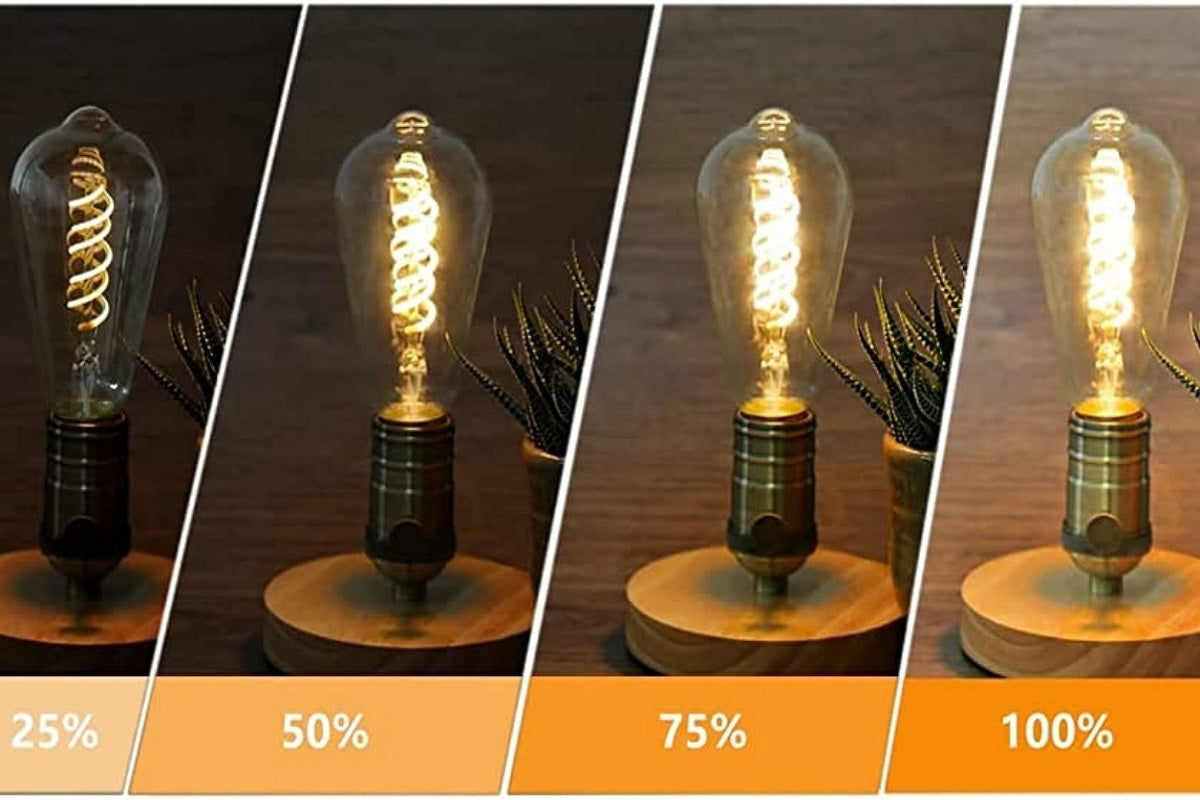Ⅰ Introduction
In the realm of home lighting, the evolution of technology has brought forth various innovations that enhance our living spaces. One such advancement is the dimmable light bulb, which allows users to adjust the brightness of their lighting to suit different moods and activities. This article will explore what dimmable light bulbs are, how they work, and provide practical guidance on how to make your lights dimmable.

Ⅱ What is a Dimmable Light Bulb?
A dimmable light bulb is designed to allow users to control the intensity of the light emitted. Unlike standard light bulbs, which operate at a fixed brightness level, dimmable bulbs can be adjusted to emit varying levels of light. This feature is particularly useful in creating ambiance in a room, whether for a cozy dinner, a movie night, or bright lighting for tasks like reading or working.
2.1 Types of Dimmable Light Bulbs
Dimmable light bulbs come in various types, including:
- Incandescent Bulbs: Traditional incandescent bulbs are inherently dimmable and can be used with standard dimmer switches.
- Halogen Bulbs: A type of incandescent bulb that is also dimmable and offers brighter light output.
- Compact Fluorescent Lamps (CFLs): Some CFLs are designed to be dimmable but require compatible dimmer switches.
- LED Bulbs: LED technology has advanced significantly, and many LED bulbs are now available with dimming capabilities. It is essential to ensure that the LED bulb is specifically labeled as "dimmable" for optimal performance.
Ⅲ Benefits of Using Dimmable Light Bulbs
- Energy Efficiency: Dimming lights can reduce energy consumption, leading to lower electricity bills.
- Extended Bulb Life: Operating bulbs at lower brightness levels can prolong their lifespan.
- Mood Enhancement: Adjustable lighting can significantly impact the atmosphere of a room, making it more inviting and comfortable.
- Versatility: Dimmable lights can be used in various settings, from dining rooms to home theaters, providing flexibility in lighting design.

Ⅳ How to Make a Light Dimmable
If you're interested in making your existing lights dimmable, there are several methods you can consider:
4.1 Install a Dimmer Switch
One of the most effective ways to enable dimming capabilities is by installing a dimmer switch. Here’s how you can do it:
- Turn Off Power: Before starting any electrical work, ensure that you turn off power at the circuit breaker.
- Remove Existing Switch: Use a screwdriver to remove the wall plate and unscrew the existing switch from the wall box.
- Connect Dimmer Switch: Follow the manufacturer's instructions to connect the wires from your new dimmer switch to the house wiring. Typically, this involves connecting the ground wire and two other wires (usually black) from the dimmer switch to the corresponding house wires.
- Secure Everything: Tuck the wires back into the electrical box and secure the dimmer switch in place before replacing the wall plate.
4.2 Use Dimmable Light Bulbs
Ensure that any new bulbs you purchase are labeled as dimmable. This step is crucial because standard LED or CFL bulbs may not function correctly with a dimmer switch. Always check compatibility before installation.
4.3 Consider Plug-In Dimmers
For lamps and fixtures that do not have hardwired connections, consider using a plug-in dimmer:
- Purchase a Compatible Dimmer: Ensure it supports the type of bulb you are using.
- Plug It In: Connect your lamp to the plug-in dimmer and then plug it into an outlet.
- Adjust Brightness: Use the controls on the dimmer to set your desired brightness level.
4.4 Smart Lighting Solutions
Smart LED bulbs offer advanced features that allow you to control brightness via smartphone apps or voice commands:
- Install Smart Bulbs: Replace your existing bulbs with smart LED bulbs compatible with your home automation system.
- Connect to Wi-Fi: Follow manufacturer instructions to connect your smart bulbs to your home Wi-Fi network.
- Control via App or Voice: Use an app or smart assistant (like Alexa or Google Home) to adjust brightness levels effortlessly.
Ⅴ How Dimming Works
Dimming technology varies depending on the type of bulb used:
- Incandescent and Halogen Bulbs: These bulbs use resistive dimmers that reduce voltage supplied to the bulb, resulting in lower brightness.
- CFLs and LEDs: These require specific electronic dimmers designed for their operation. Standard resistive dimmers may cause flickering or buzzing if used with non-dimmable CFLs or LEDs.
5.1 Choosing the Right Dimmer Switch
When selecting a dimmer switch, consider these factors:
- Compatibility: Ensure that your chosen dimmer is compatible with the type of bulbs you plan to use (incandescent, halogen, CFL, or LED).
- Wattage Rating: Check that the total wattage of all connected bulbs does not exceed the wattage rating of the dimmer switch.
- Type of Control: Decide if you want a single-pole dimmer (controls one fixture) or a three-way dimmer (controls one fixture from two different locations).
Ⅵ Troubleshooting Common Issues
If you encounter problems with your dimmable lights, here are some common issues and their solutions:
- Flickering Lights: This could be due to incompatible bulbs or poor connections. Ensure all connections are secure and check if your bulbs are rated as dimmable.
- Buzzing Noises: Buzzing often occurs with incompatible dimmers or when using non-dimmable bulbs. Switching out for compatible components usually resolves this issue.
- Limited Dimming Range: If lights do not dim sufficiently, check if you're using compatible bulbs and if your dimmer switch supports full range adjustments.
Ⅶ Conclusion
Dimmable light bulbs offer an excellent way to enhance your home lighting experience by providing flexibility in brightness levels for various activities and moods. By understanding what makes a light bulb dimmable and how to implement these solutions in your home, you can create an inviting atmosphere tailored to your needs. Whether through installing dedicated dimmer switches, utilizing smart lighting technologies, or simply choosing suitable bulbs, achieving perfect lighting has never been easier.
Incorporating these practices not only improves ambiance but also contributes to energy efficiency and cost savings over time. As technology continues to evolve, exploring new options for lighting control will keep our homes comfortable and stylish while meeting our changing needs.
Ⅷ FAQ
1. Can you convert a non-dimmable light to dimmable?
Non-dimmable LED bulbs are incompatible with dimmable circuits due to their distinct componentry. A dimmable bulb can work on a non-dimmable circuit, but will not dim.
2. Can you use a dimmable bulb in a regular light switch?
Dimmable LED light bulbs can be used in ordinary sockets, provided the base type is compatible (e.g., E26, E27). To use the dimming feature, you must use a dimmer switch specifically intended for LED lighting.
3. Can I make my lights dimmable?
A dimmer can replace any regular switch on your wall, but it requires dimmable bulbs to function properly.

